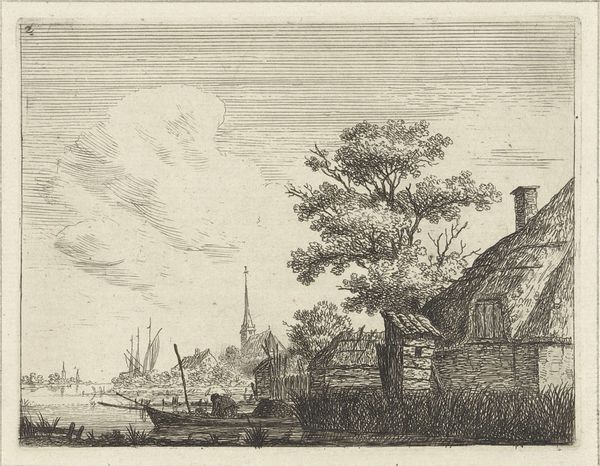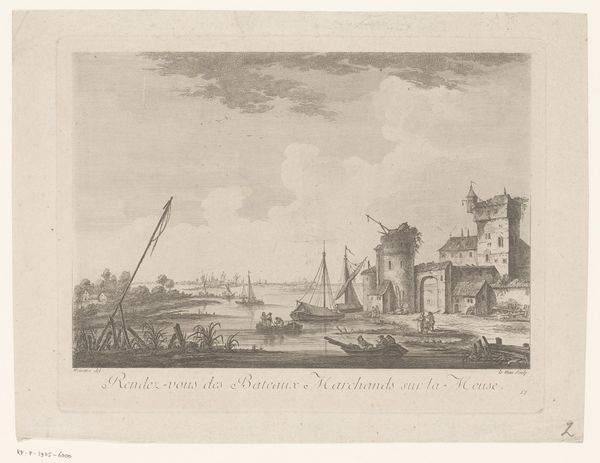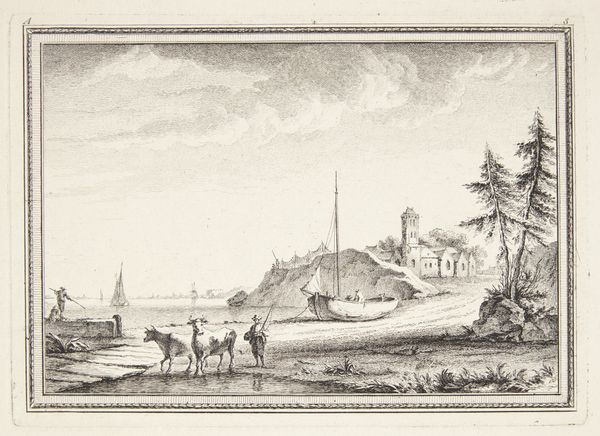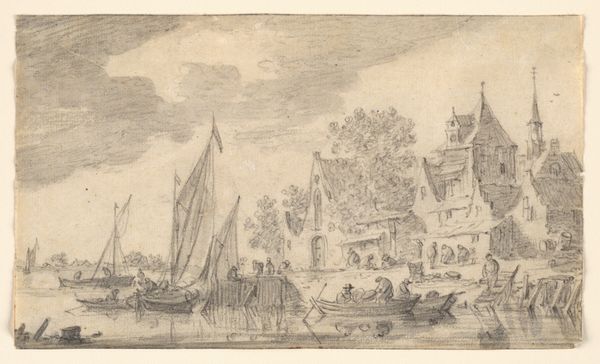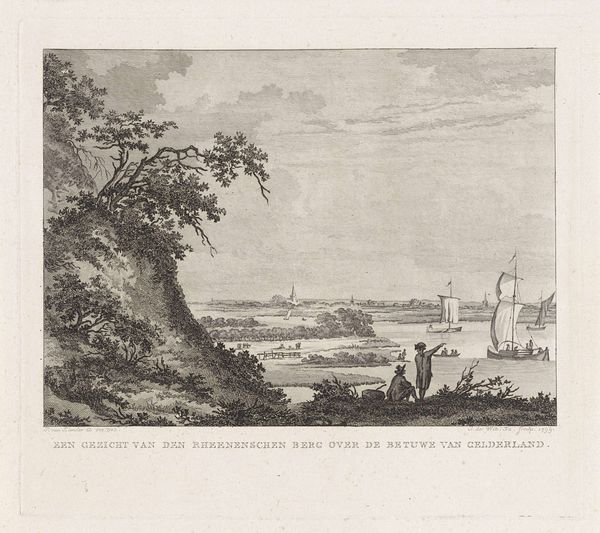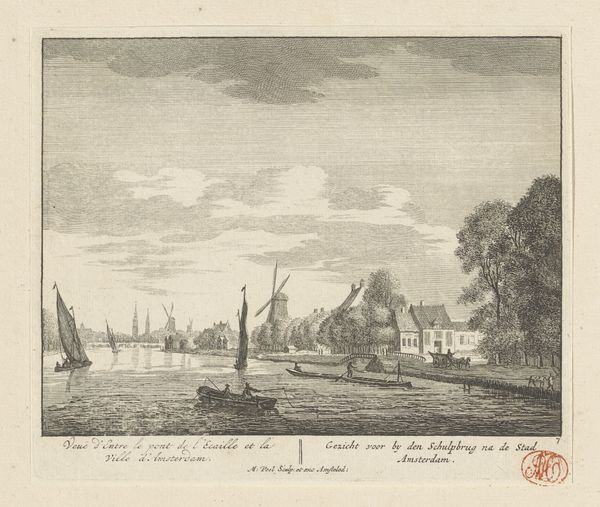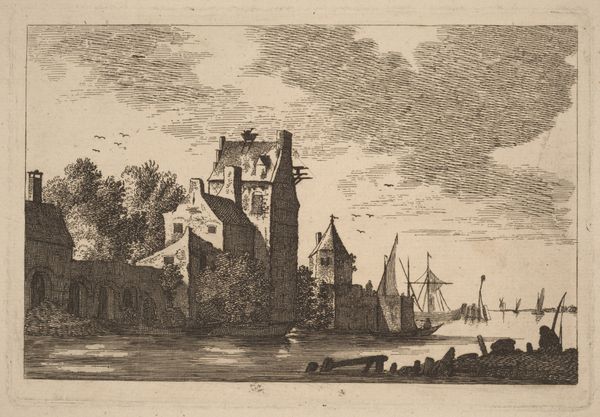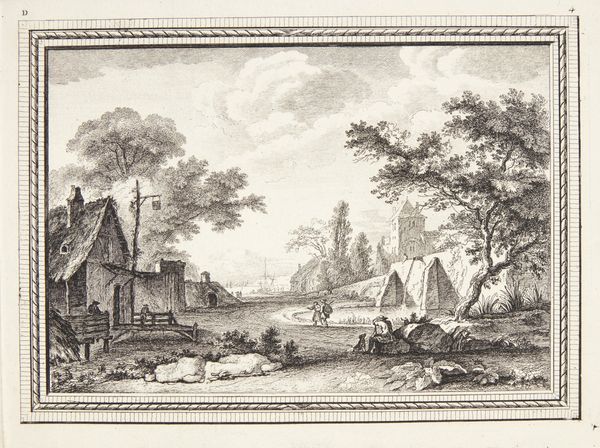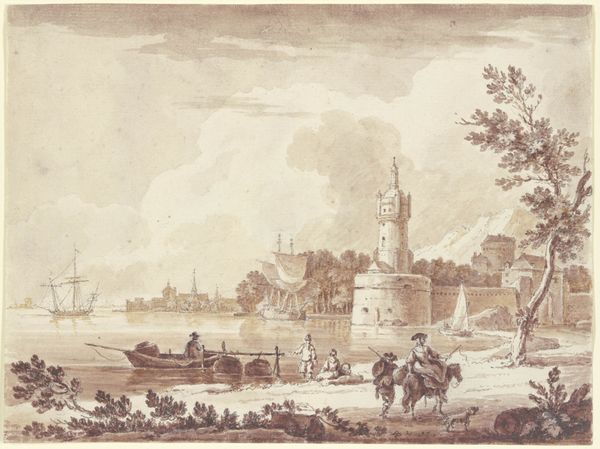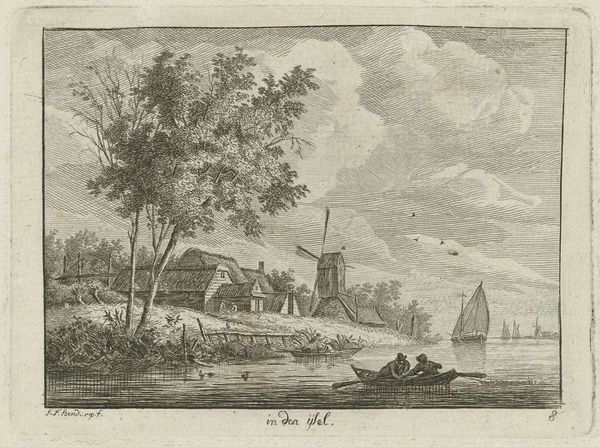
Udsigt over en havn, i forgrunden to fiskere 1750 - 1795
0:00
0:00
Dimensions: 127 mm (height) x 182 mm (width) (plademål)
Curator: Look at this captivating cityscape drawing, "Udsigt over en havn, i forgrunden to fiskere," dating back to between 1750 and 1795, currently housed here at the SMK. The artist is Jeanne Francoise Ozanne, and it is rendered with etching and ink techniques. Editor: My initial reaction? Serenity, punctuated by labour. The almost ethereal sky contrasts with the immediate grounded presence of those two fishermen. There is also some sense of historical significance, like peering into a time capsule. Curator: That's insightful. The contrast you observe also extends to the themes. This etching successfully weaves together cityscape elements, evoking a sense of place, with the very real human element of labour within history. Editor: And what do these serene harbour scenes whisper about history? It is almost as if the tranquil facade masks underlying sociopolitical currents. Who gets to relax on a boat in that harbour, and who has to row? And for what ends? Curator: The maritime elements certainly lend themselves to speculation about trade, power, and exchange. Ports, especially in that era, are where the private meets public. In terms of symbology, it evokes the larger forces at play. Editor: Absolutely. And look at how the artist uses ink! The sky alone is a marvel of subtlety. It goes to show the possibilities of pen and ink outside the world of letters and text. There is light there. But, tell me, is there a conscious decision on Ozanne's part? A vision? Curator: We can look into how Ozanne plays with Baroque styles—she has injected realism to contrast against the era’s artistic grandstanding. She’s memorialising an actual locale—with history but, most interestingly, not historical figures. Common figures take precedence here. Editor: Fascinating, because ultimately it prompts reflection on not just a scene, but all scenes. Everyday places can teach a lesson if only one took the time to look—really *see* like Ozanne did. Curator: Precisely. The image quietly prompts to ask ourselves, what symbols will *we* choose to remember the places we inhabit now? Editor: That’s a profound point to conclude on! It makes me think about what *my* view would look like in the ink strokes of the past…or future!
Comments
No comments
Be the first to comment and join the conversation on the ultimate creative platform.
